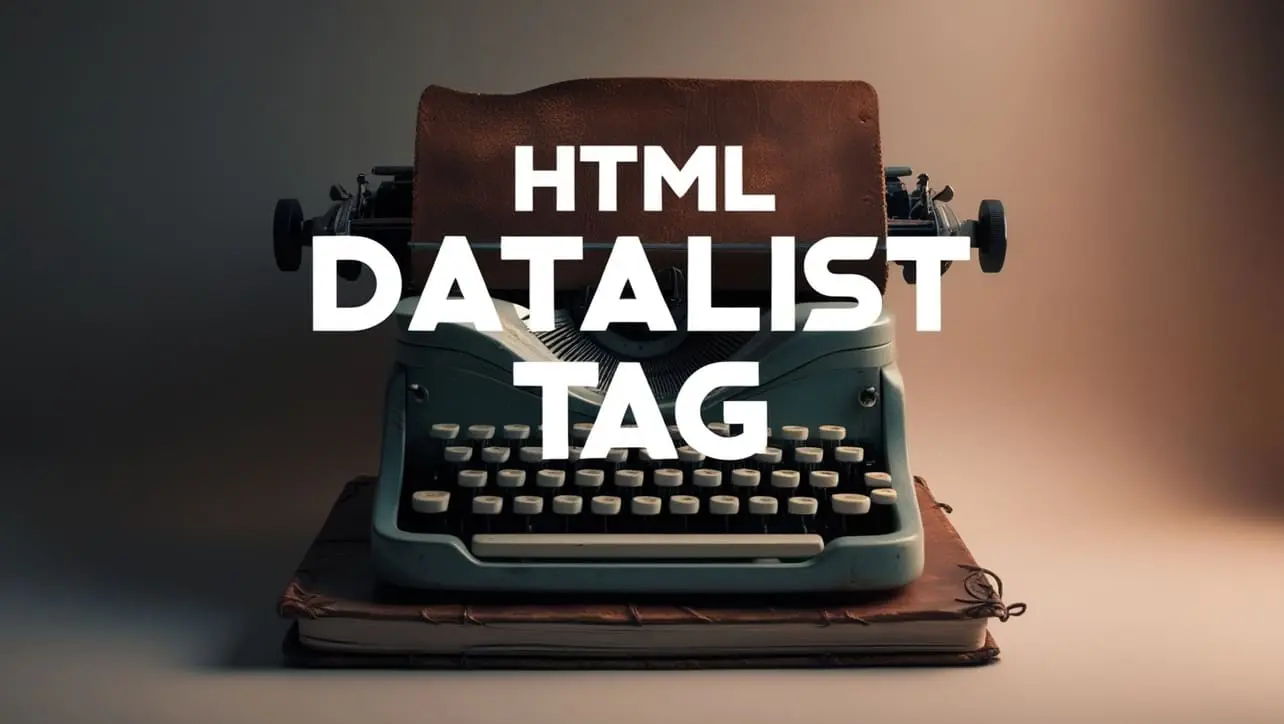
HTML Topics
- HTML Intro
- HTML Basic
- HTML Editors
- HTML CSS
- HTML Tags
- <!--...-->
- <!DOCTYPE>
- <a>
- <abbr>
- <address>
- <area>
- <article>
- <aside>
- <audio>
- <b>
- <base>
- <bdi>
- <bdo>
- <bgsound>
- <blink>
- <blockquote>
- <body>
- <br>
- <button>
- <canvas>
- <caption>
- <cite>
- <code>
- <col>
- <colgroup>
- <data>
- <datalist>
- <dd>
- <del>
- <details>
- <dfn>
- <dialog>
- <div>
- <dl>
- <dt>
- <em>
- <embed>
- <fieldset>
- <figcaption>
- <figure>
- <footer>
- <form>
- <h1> to <h6>
- <head>
- <header>
- <hgroup>
- <hr>
- <html>
- <i>
- <iframe>
- <img>
- <input>
- <ins>
- <kbd>
- <label>
- <legend>
- <li>
- <link>
- <main>
- <map>
- <mark>
- <menu>
- <meta>
- <meter>
- <nav>
- <noscript>
- <object>
- <ol>
- <optgroup>
- <option>
- <output>
- <p>
- <param>
- <picture>
- <pre>
- <progress>
- <q>
- <rp>
- <rt>
- <ruby>
- <s>
- <samp>
- <script>
- <search>
- <section>
- <select>
- <small>
- <source>
- <span>
- <strong>
- <style>
- <sub>
- <summary>
- <sup>
- <svg>
- <table>
- <tbody>
- <td>
- <template>
- <textarea>
- <tfoot>
- <th>
- <thead>
- <time>
- <title>
- <tr>
- <track>
- <u>
- <ul>
- <var>
- <video>
- <wbr>
- HTML Deprecated Tags
- HTML Events
- HTML Event Attributes
- HTML Global Attributes
- HTML Attributes
- HTML Comments
- HTML Entity
- HTML Head
- HTML Form
- HTML IndexedDB
- HTML Drag & Drop
- HTML Geolocation
- HTML Canvas
- HTML Status Code
- HTML Language Code
- HTML Country Code
- HTML Charset
- MIME Types
HTML datalist Tag

Photo Credit to CodeToFun
🙋 Introduction
The HTML <datalist> tag is a powerful element that enhances user input by providing a predefined list of options.
This guide will walk you through the ins and outs of using the <datalist> tag effectively in your web development projects.
🤔 What is <datalist> Tag?
The <datalist> tag is used in conjunction with the <input> element to create a list of predefined options for user input. It serves as a dynamic dropdown menu that simplifies user interaction on your web forms.
💡 Syntax
To implement the <datalist> tag, you need to define it within the <input> element using the list attribute. Each <option> within the <datalist> specifies a choice for the user.
<input list="datalist-id" name="your-input-field">
<datalist id="datalist-id">
<option value="Option 1">
<option value="Option 2">
<!-- Add more options as needed -->
</datalist>🧰 Attributes
- list: Associates the
<datalist>with a specific <input> element. - <option>: Specifies the options within the
<datalist>.
📚 Common Use Cases
Basic Implementation:
The
<datalist>tag is commonly used in scenarios where you want to offer users predefined choices.basic-implementation.htmlCopied<label for="browsers">Choose a browser:</label> <input list="browser-list" name="browsers" id="browsers"> <datalist id="browser-list"> <option value="Chrome"> <option value="Firefox"> <option value="Safari"> <option value="Edge"> <!-- Add more browser options as needed --> </datalist>Dynamic Data:
You can populate the
<datalist>dynamically using JavaScript to fetch options from a server or update them based on user input.dynamic-data.htmlCopied<label for="countries">Choose a country:</label> <input list="country-list" name="countries" id="countries" oninput="updateOptions()"> <datalist id="country-list"> <!-- Options will be dynamically added here --> </datalist> <script> function updateOptions() { // Fetch and update options dynamically based on user input } </script>
🖥️ Browser Support
Understanding the compatibility of the <datalist> tag across different browsers is essential for delivering a consistent user experience. Here's an overview of its support:
- Google Chrome: Fully supported.
- Mozilla Firefox: Fully supported.
- Microsoft Edge: Fully supported.
- Safari: Fully supported.
- Opera: Fully supported.
- Internet Explorer: Partial support (some versions may have limitations).
Ensure you test your code in various browsers to guarantee a seamless experience for your audience.
🏆 Best Practices
- Keep the list of options concise and relevant to improve user experience.
- Consider providing additional information or examples alongside the
<datalist>for clarity. - Test the behavior of dynamic updates in different browsers to ensure consistent functionality.
🎉 Conclusion
The HTML <datalist> tag is a valuable tool for enhancing user interactions in web forms. By mastering its implementation and considering best practices, you can create more user-friendly and efficient input experiences on your websites.
👨💻 Join our Community:
Author

For over eight years, I worked as a full-stack web developer. Now, I have chosen my profession as a full-time blogger at codetofun.com.
Buy me a coffee to make codetofun.com free for everyone.
Buy me a Coffee












If you have any doubts regarding this article (HTML datalist Tag), please comment here. I will help you immediately.